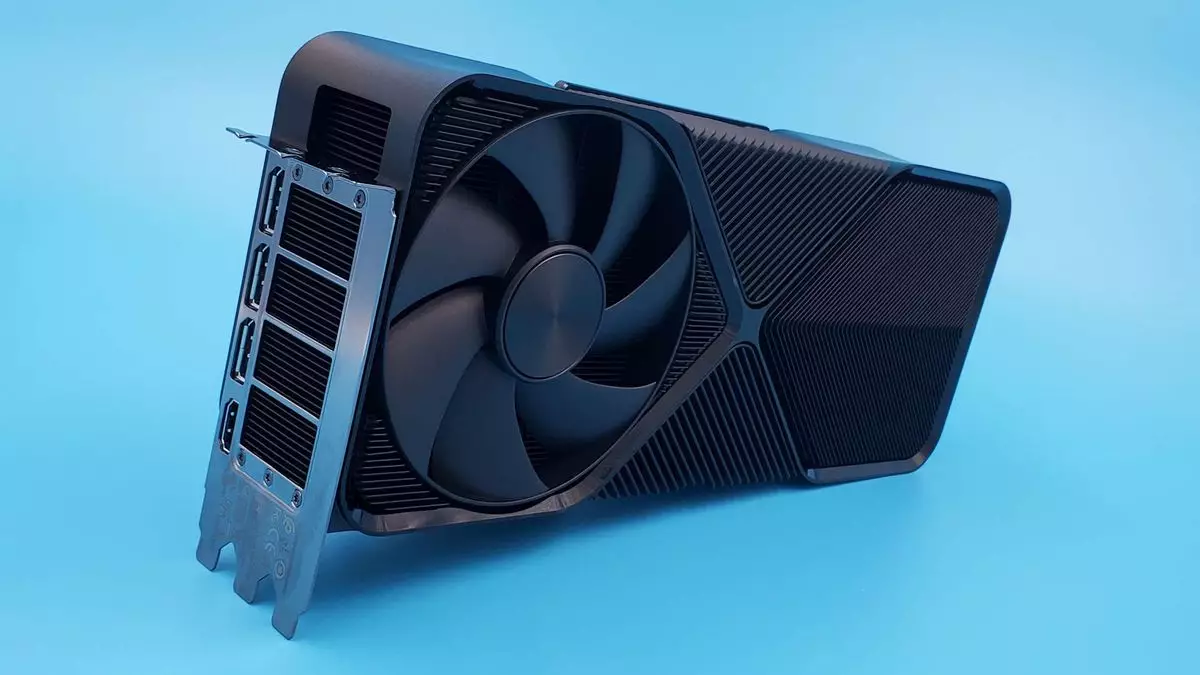In the ever-evolving landscape of computer graphics and gaming technology, Nvidia remains a trailblazer. The anticipation surrounding the potential release of their 32 GB RTX 5090 GPU has sparked fresh conversations about the integration of advanced artificial intelligence (AI) techniques, which could dramatically transform in-game graphics. This transformation hints at a not-too-distant future where traditional graphical rendering is overshadowed by the prowess of neural networks, leading to fully AI-rendered games. As the gaming community prepares for the influential CES show in 2025, the insights gathered from industry leaks hint at the monumental changes that lie ahead.
Insights into Upcoming Nvidia Innovations
Recent communications from INNO3D, a prominent graphics card manufacturer, have hinted at what might come next for Nvidia. Although the company has not referenced Nvidia GPUs directly, its comments about a “new range of graphics cards” at CES 2025 strongly suggest upcoming Nvidia releases. By emphasizing tools like DLSS (Deep Learning Super Sampling), ray tracing (RT) cores, and various AI technologies, INNO3D seemingly points toward Nvidia’s forthcoming innovations.
The emphasis on AI technology and enhanced ray tracing capabilities is particularly noteworthy. Among the features highlighted by INNO3D are improved performance for AI-integrated tasks, advanced neural rendering capabilities, and sophisticated AI-driven upscaling options. These advancements are set to revolutionize graphics processing and display, extending their benefits beyond just gaming to encompass video content creation as well.
While various aspects outlined by INNO3D could arguably pertain to existing RTX 40-series GPUs, one concept stands out: Neural Rendering. This term, while used previously by Nvidia, raises expectations about the potential for entirely AI-driven rendering methods in real-time applications. Bryan Catanzaro, Nvidia’s VP of Applied Deep Learning Research, previously noted that creating images rendered solely by neural networks is technically possible, albeit not yet meeting the high benchmarks expected in modern gaming.
At present, the reliance on traditional rendering pipelines for a significant portion of graphical output remains. Nvidia has revealed that traditional GPU pipelines are only responsible for rendering about one in eight pixels in gaming environments when utilizing technologies like DLSS and Frame Generation. The goal, however, appears to be a shift away from conventional methods wherein AI could ultimately manage the entire rendering process. In this hypothetical scenario, AI would analyze game inputs and scene data and autonomously produce visuals, thus redefining the rendering mechanics of video games.
The Gradual Shift Toward Complete AI Rendering
Despite the exciting prospects of Neural Rendering, complete reliance on AI might prove too challenging in the short term. Instead, Nvidia seems poised to delegate specific tasks within the 3D rendering pipeline to AI algorithms. For example, Real-Time Neural Radiance Caching could revolutionize path tracing, utilizing AI technology to enhance the efficiency and quality of lighting and reflections. Ultimately, this nuanced approach might serve to incrementally transition the industry toward fully AI-rendered graphics rather than attempting an immediate overhaul of existing systems.
While some industry observers may regard the term “Neural Rendering” as mere marketing jargon, it signals a substantial trend in GPU technology development. Nvidia’s unwavering commitment to AI suggests that the company is seriously exploring these advanced rendering techniques, which could markedly improve graphical fidelity and performance.
As we stand on the brink of a revolution in gaming graphics, Nvidia’s trajectory is undeniably one to watch. The introduction of neural networks and AI-rendering could lead to significant advancements in the realism and immersive potential of video games, marrying art with algorithmic precision. While the full realization of entirely AI-rendered visuals may still be on the horizon, incremental innovations will likely pave the way for increasingly sophisticated graphics technologies in the coming years.
Ultimately, the anticipated RTX 50-series GPUs signal not just another step forward for Nvidia but also a transformative moment in the gaming industry at large. As AI continues to evolve and integrate deeper into graphics rendering processes, players can expect an unprecedented level of artistry and nuance in their gaming experiences. As the world looks forward to CES 2025, the excitement around Nvidia’s next-gen capabilities stands as a testament to the relentless progression of technology in redefining visual storytelling in games.


Leave a Reply